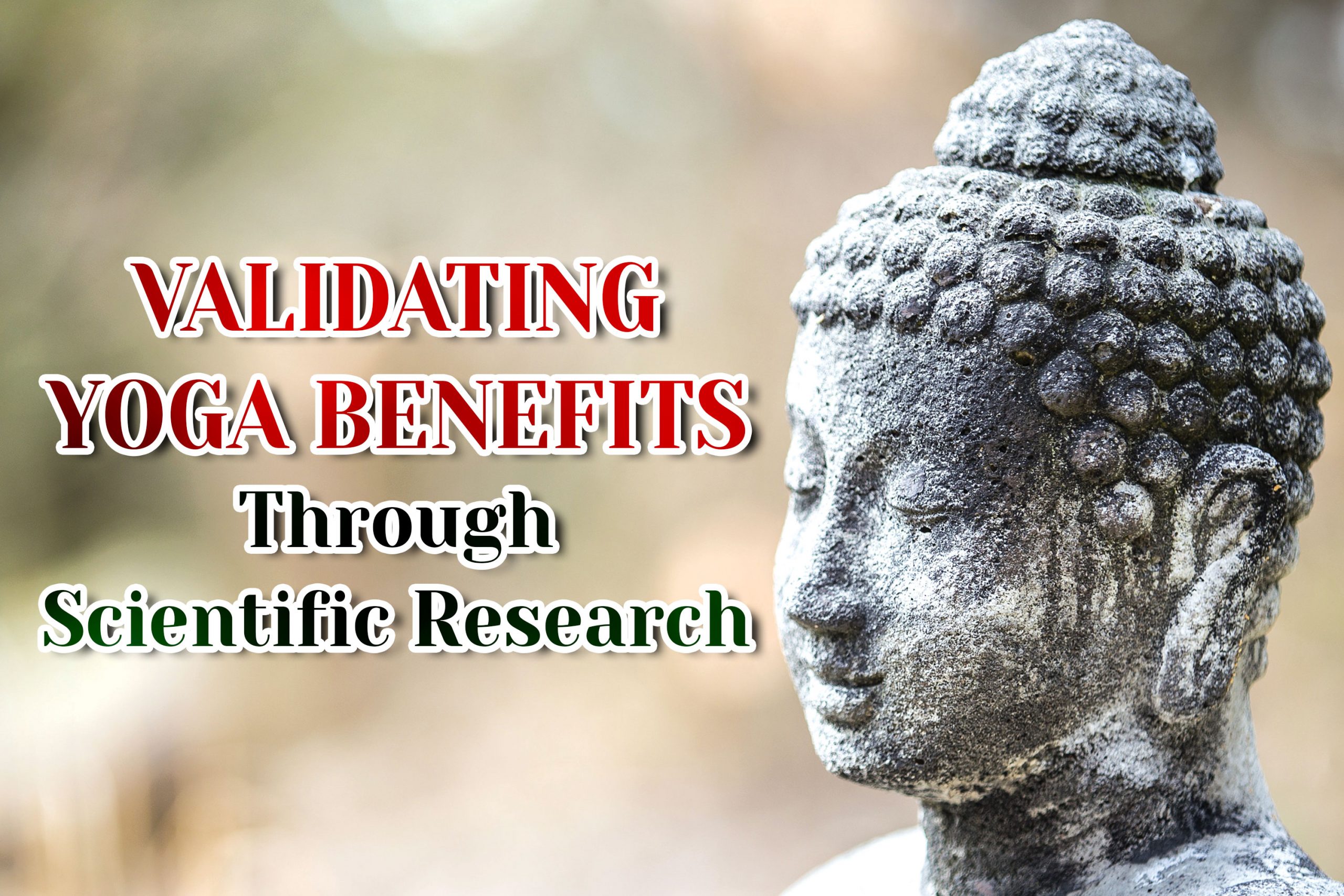Background
Yoga has been practiced and taught for thousands of years, incorporating asana, pranayama, meditation and additional elements under the holistic banners of yoga and yoga therapy. The physical, mental and emotional benefits provided by a holistic practice have been shared through teaching, personal experiences and extensive anecdotal evidence throughout time.
More recently, scientific research and surveys have created bodies of evidence and data which provide support to the claims of the numerous benefits that yoga and yoga therapy can deliver. Scientific research began to appear from the mid 1970’s and has grown since that time. Supported by government and private enterprise funding, studies have been most predominant in the United States, Germany, United Kingdom, Australia, Poland and India. As an example of the growth in interest in validating the anecdotal evidence of the many benefits a holistic yoga practice can provide, Yoga Alliance reported that US government surveys show a growth in the use of yoga as a component within integrated medicine studies – from 5% in 2002 to 14% in 2017. A significant increase and one that continues to grow.
Prominent areas of Research
Since 1975 research studies have been undertaken which have created a growing amount of scientific evidence supporting the benefits yoga delivers to both healthy and health impaired individuals. While it is challenging to document all the studies of relevance within this article, I would point the reader to easily accessible sources, such as the Yoga Alliance website, which provides access to research studies which have been undertaken involving Yoga and Yoga Therapy, along with videos and webinars providing overviews of research material in easily ‘digestible’ formats.
Early research work focused predominantly on validating general health benefits and benefits when yoga is part of an integrative treatment program for sufferers of disease and chronic health disorders. Yoga Alliance has reported there are more than 150 clinical trials researching the benefits of yoga to cancer patients which include more than 10,000 participants. The majority of these studies are focused on breast cancer – reflecting the prominence as the most prevalent cancer globally and the direct relevance to women who are the significantly dominant yoga practitioners throughout the world. Studies focus in two main areas – benefits of yoga in treatment for breast cancer patients and benefits of yoga in treatment of breast cancer survivors. Since early studies, research has focused on a range of physical, mental and emotional areas. These include general health and well-being, disease and health disorders – including cancer, cardiovascular and respiratory disease, diabetes, thyroid and hormonal issues, chronic disorders such as back pain and immunity compromise, and mental and emotional impairments – including anxiety, stress, mood disorders, depression, areas related to emotional self-regulation and awareness, and sleep disorders.
More recently as technology has advanced and the ability to measure mental and emotional aspects across populations, there are increasing scientific research studies which have focused on the benefits yoga and yoga therapy bring to mental and emotional health. A 2020 study of yoga research (“A comprehensive Review of yoga research in 2020”, Abhijit Dutta, Mooventhan Aruchunan, Anindya Mukherjee, Kashinath G. Metri, Kuntal Ghosh, and Indranill Basu-Ray, Journal of Integrative and Complementary Medicine) highlighted that recent studies were predominantly focused on mental health and neuropsychology – key areas in studies were anxiety, stress, mindfulness, depression, and cognitive ability. The growth in the proportion of studies focused on mental and emotional health is reflecting how these areas have become key in impacting populations across the globe, but also highlight how technological development is helping to better validate the broader reaching benefits of yoga and yoga therapy in physical, mental and emotional areas. This 2020 study provides a good overview of the current environment of yoga research and what were the predominant areas of focus. The study highlighted that beyond the predominant areas of mental health and neuropsychology, the most prominent areas for study were cardiorespiratory health, with lesser focus in the areas of diabetes, cancer, immunodeficiency and general health. It is worth noting the relevance of studying the area of potential benefits yoga can provide to cardiorespiratory health given the global pandemic from COVID-19, it would be reasonable to assume studies will increase in the future in this area to identify and measure benefits yoga can provide to those recovering from exposure to Covid-19 and any longer term impairments to health related to that exposure.

The studies into mental and emotional areas, and the benefits that yoga can provide in these areas, will continue to grow as technology advances and the ability to measure neurological and nervous system activity and change develops. This area of research is very much developing and is exciting because of the potential real benefits that can arise from studies in this area. Understanding and validating how a holistic yoga practice can possibly provide a range of mental and emotional benefits to healthy and health impaired populations could result in very significant advances for society in addressing the growth in negative socio-economic impacts from mental and emotional health issues throughout the world. Statistics sourced from Our World in Data (”Mental Health” Hannah Ritchie and Max Roser, 2018) show the following:
• 792 million people, 10.7% of the global population have a mental disorder;
• 264 million people, 3.4% of the global population suffer depression;
• 284 million people, 3.8% of the global population suffer anxiety disorders.
Stress and mental health related disease and disorders can be seen to be an extensive issue through the global population, with a proportionally higher impact on Women. This has significant impacts socially (through direct impacts on communities, families and relationship stability) and economically (through cost impacts such as treatment cost and losses through sick days and productivity in the work environment).
A number of studies have been undertaken using mental imaging techniques and provide evidence of increased Gamma-aminobutyric acid (GABA) – this is an amino acid that functions as the primary inhibitory neurotransmitter for the central nervous system, reducing neuronal excitability by inhibiting nerve transmission GABA increases results directly in reduced stress, anxiety and mood imbalance. Some key findings from a number of studies (The Meditative Mind: A Comprehensive Meta-Analysis of MRI Studies. Boccia M, Piccardi L, Guariglia P., Biomed Res Int. 2015), which have used neuroimaging techniques to measure brain activity and changes in brain structure and chemical activity were:
• Improved levels of concentration, attention and focus; and,
• Enhanced memory and adaptive behaviors for problem solving.
Additionally, Yoga Alliance has reported further studies which highlight:
• Lower levels in indicators of stress, anxiety and mood disorders; and,
• Indicators of enhanced self-regulation of stress and anxiety.
• Increased GABA – reducing neuronal excitability by inhibiting nerve transmission and directly reducing stress and anxiety; and,
• Enhanced capacity for pain regulation within long term practitioners of yoga – studies showed that the ability to regulate pain improved the longer the practitioner had been practicing yoga.
General findings from Research
If we break research areas down into key themes or areas, I think a good way to look broadly across the volume of findings and data is into the following categories:
• Physical benefits – it is now widely accepted that yoga improves strength, flexibility, mobility, balance, proprioception and energy levels – enhancing performance generally. Additionally, research studies have provided evidence of deeper physical benefits including enhancing bone strength and density, immunity levels, cardiovascular and respiratory functions, reducing inflammation and blood sugar levels, and positive impacts on hormone imbalance. The broadness of these physical benefits points to yoga being beneficial across all age levels and for both healthy and health challenged populations;
• Mental and emotional benefits – the studies have shown positive benefits from yoga on concentration, attention, focus and enhanced memory and cognitive function. At a higher emotional level, the evidence supports benefits to self-esteem and self-awareness that accrue through a consistent yoga practice.
• Impaired health benefits – there is a large and growing body of research covering the impacts of a yoga practice where individuals are suffering disease or disorder of a chronic nature. These research studies have essentially looked at how yoga can improve the impact of symptoms, management of pain and the overall quality of life experience. The studies have generally found positive evidence that yoga improves overall quality of life, and has direct positive impacts on symptoms and side effects of disease and disorder such as fatigue, sleep disorder, inflammation, immunity, pain tolerance and regulation, anxiety, mood imbalance and stress.

The Importance of Research
Why is this growth in research important? Fundamentally it is capturing evidence which supports, with statistical significance, a variety of hypotheses describing the benefits of yoga and yoga therapy practices. These benefits can be from a general health and well being perspective, or in relation to the benefits they provide in the treatment of disease and disorder. Both reasons are critically important to our society because Government and public service spending initiatives, and private sector spending (think Insurance support for medical treatments), are based on these research studies. Public and private institutions will analyse research studies to determine areas that can provide benefit and assess based on cost /benefit ratios which activities/treatments will provide most benefit to the population from each dollar allocated to that activity/treatment, and apportion funding for resources and infrastructure accordingly. Public and Private investment and allocation of resources is based on what activities and treatments will
yield the greatest benefit to individuals and society from investment. Thus there are very tangible economic and social benefits throughout society that arise off the back of scientific research which investigates potential benefits of yoga and yoga therapy.
Conclusion
The purpose of this article has been to position the scientific research of yoga – its history, the predominant areas of focus, and why it is important. The deeper details of the research and data produced are easily accessible through online sources and publicly available media and literature – there are many reputable organisations and outlets who present the research findings through experts with much more skill than me at analysing and presenting research findings! My aim through this article is simply to try to present an overall picture of yoga research and why it is important – and present that in an easy to read and understand manner.
At an individual level, healthy and health impaired people who have a consistent practice in yoga or yoga therapy know the very real benefits they capture – physically, mentally and emotionally. Where yoga research is fundamentally important is in providing evidence of these individual experiences to the broader populations in our society who have not practiced or been exposed to yoga. Also, to create extensive bodies of validating data which supports the benefits of yoga and yoga therapy – data that can be analysed and relied upon by public policy makers (Governments) and the private sector (Insurance and Health Services entities) in their funding and resource allocation decision making. Yoga research provides opportunities for Governments and public policy makers to capture evidence that supports allocation of funding, resources and infrastructure towards yoga – both for its broader adoption as an integral component in general health and well-being, and as an integrated element in the treatment of health impairment issues. It is a similar position for private sector investment and allocation of resources.
Given the growth in research studies and the significantly positive evidence supporting the benefits yoga provides to healthy and health impaired populations, it is very important that yoga practitioners continue to look for opportunities to help foster development and growth in yoga research. This then helps guide public and private funding towards yoga and yoga therapy initiatives for driving broader exposure and benefits across our society and populations. Creating more opportunities to enrich the lives of all through yoga!


















 Other
Other